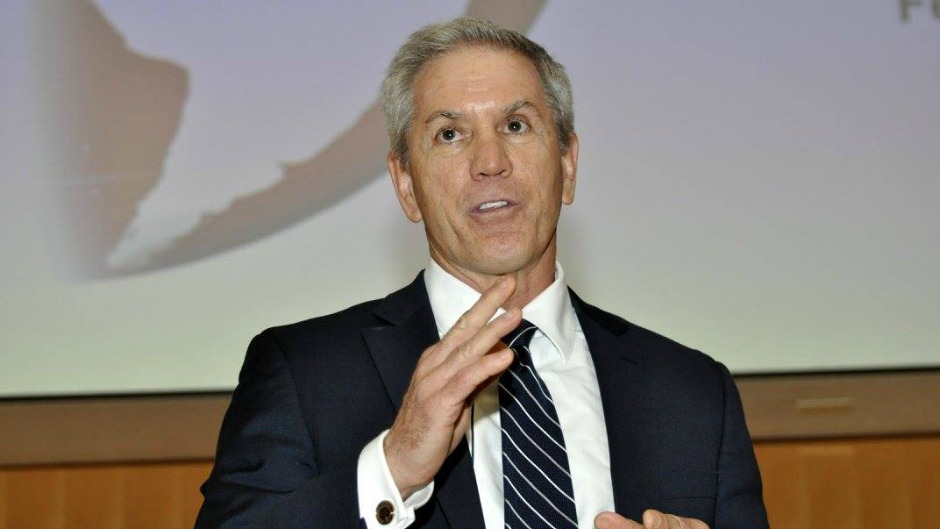School of Business alumnus Thomas Koulouris (MBA ’08), senior program manager at AECOM, a Los Angeles-based program consultant overseeing the hospital’s plan, offered insights into its current status during a recent Special Global Series Presentation entitled: The Billion-Dollar Redevelopment of Jackson Health System and the Seven Habits of Highly Successful Projects.
The event, held at the School in February, hosted leaders from the Construction Management Association of America and the South Florida architecture, engineering and construction industries.
Koulouris said Jackson’s strategic plan will transform the hospital into a modernized, patient-centered healthcare system that can better meet the future needs of Miami-Dade County residents and international patients.
“The six signature projects of the Miracle-Building Bond Program are progressing nicely,” said Koulouris. “All of the projects are at schematic phase and we are right on schedule and right on budget. Steady as she goes.”
Sergio Aranda, a partner executive with e-Builder and member of CMAA's Emerging Technologies Committee, rolled out what he calls the seven habits of highly successful projects, a wordplay off Stephen R. Covey’s best-selling book series that kicked off with The 7 Habits of Highly Successful People. His goal was to demonstrate how “best in class” owners books organizational performance in seven simple steps.
The special presentation was against the backdrop of a Dodge Data & Analytics 2017 “Construction Outlook” report, a mainstay in construction industry forecasting and business planning. The report predicts that total U.S. construction starts for 2017 will advance 5 percent to $713 billion, following gains of 11 percent in 2015 and an estimated 1 percent in 2016.
On balance, there are a number of positive factors which suggest the construction expansion has room to proceed, according to Dodge. The U.S. economy in 2017 is anticipated to see moderate job growth, market fundamentals for commercial real estate should remain generally healthy, and more funding support is coming from state and local bond measures, the firm reports.
At the same time, McKinsey & Company, 98 percent of projects suffer cost overruns of more than 30 percent and 77 percent are at least 40 percent late. And Accenture research reveals less than one-third of capital projects adhere to approved budgets and less than one-fifth of respondents report being within 10 percent of costs. It’s not surprising AT Kearney surveys show increased project complexity and concern about project management is at the fore.
Aranda shared what organizations are doing differently to perform over five times better than their peers. Those seven habits are: (1) be proactive; (2) forecast completion; (3) automate to operate; (4) win-win and pay fast; (5) empathize, adapt and overcome; (6) collaborate to accelerate; (7) and relentlessly improve.
Seven Habits of Highly Successful Projects
-
Be Proactive: Have an undeniable focus on shifting from reactive to proactive.
-
Forecast Competition: Spend a majority of their time looking at what’s ahead and estimating where they are going to be when they hit key milestones.
-
Automate to Operate: Automate tasks that drain time so they can operate in high value areas of capital program management.
-
Win-Win and Pay Fast: Pay special attention to motivations and incentives that help the project team.
-
Emphathize, Adapt and Overcome: Spend time with program and construction managers and look at processes they put in place to find out what works and what doesn’t.
-
Collaborate and Accelerate: Have a key focus on making sure everybody on the project team is well-coordinated and able to communicate seamlessly.
-
Relentlessly Improve: Create a process for looking at throughput on repetitive processes and finding ways to drive cycle time down by reducing steps, days and money.

